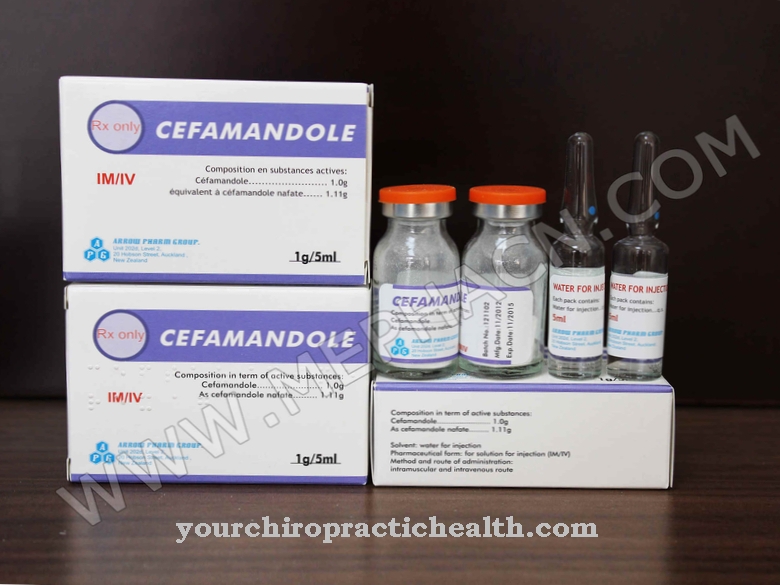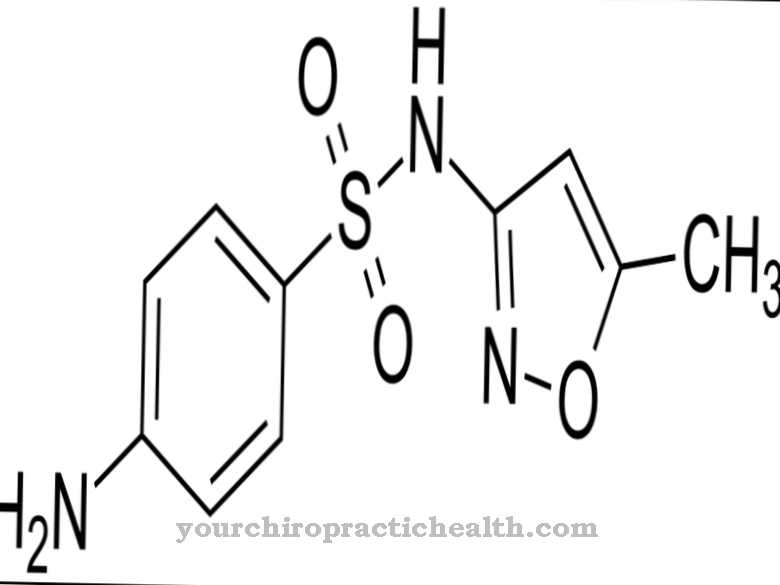As Hydralazine a drug is called that has a vasodilating effect. It is used to treat heart failure and high blood pressure during pregnancy.
What is hydralazine?
Hydralazine is one of the vasodilators. These are vasodilating agents that are used to lower high blood pressure. In Europe, however, the related dihydralazine is used more. The World Health Organization (WHO) has placed hydralazine on the list of indispensable drugs.
As a rule, hydralazine is administered as a combination preparation under the trade names TRI-Normin® or Pertenso® and in the USA as a single preparation Apresoline®. The active ingredient also bears the names Dihydralazine or 1-hydralazinylphthalazine. The chemical backbone of the agent consists of two benzene rings, which makes it an aromatic molecule.
Pharmacological effect
Since hydralazine is one of the drugs that stimulate blood circulation, it causes immediate relaxation of the vascular muscles. This applies primarily to the small arteries. The hydralazine ensures a general expansion of the blood vessels, which in turn lowers high blood pressure (hypertension).
In addition, the active ingredient has the property of lowering the vascular resistance within the kidneys and the brain. This effect also has the effect of relieving pressure if the blood pressure is too high. In this way, blood flow to the kidneys can be guaranteed as part of long-term therapy.
However, it is important to ensure that the performance of the heart and the cardiac output properties of the hormone adrenaline are not impaired by hydralazine. The blood pressure lowering effect of the vasodilator can lead to an increase in the heartbeat volume and heart rate. However, it is possible to counteract this reflex by administering beta blockers.
Like other drugs that have a vasodilatory effect, hydralazine can decrease urine volume. For this reason, the active ingredient is well suited as a combination agent for beta blockers and dehydrating preparations. The related drug dihydralazine has a similar effect as hydralazine.
Hydralazine is highly resorbed in the intestine. However, the biological availability is only 25 to 30 percent, which is due to the hepatic first-pass effect. The duration of the antihypertensive effect of the drug is approximately five to six hours. The maximum plasma level occurs after 30 to 120 minutes.
Most of the hydralazine is broken down in the liver. The metabolites, including the unchanged hydralazine, are eliminated via the kidneys.
Medical application & use
Hydralazine is used to treat high blood pressure, the active ingredient being used almost exclusively as a combination preparation. The most important areas of application are severe heart failure and high blood pressure during pregnancy.
In the course of pregnancy, however, hydralazine is no longer considered the drug of choice for severe hypertension. Medicine classifies the drugs labetalol and nifedipine as more effective.
Hydralazine is given in the form of tablets. It is important to keep them at room temperature and protect them from light. Injection solutions, which should also be stored at room temperature, are another administration option. In addition, the solution must not cool down.
Risks & side effects
The use of hydralazine can be associated with unpleasant side effects. However, these effects do not automatically show up in every patient. In most cases, people suffer from gastrointestinal problems such as constipation, poor appetite, diarrhea, nausea and vomiting, dizziness, drop in blood pressure, a blocked nose or water retention in the body.
In rare cases, sensory disturbances such as feelings of coldness, tingling or numbness, migraine-like headaches, urinary bladder disorders, muscle tremors, muscle cramps, an inflamed liver, fatigue, allergic reactions such as rash or itching, depression, anxiety and erectile dysfunction can occur.
At the beginning of hydralazine therapy, with a rapid increase in the dose, an increased pulse, palpitations and tightness problems in the chest occur, which can be attributed to the expansion of the vessels and the lowering of the blood pressure. With prolonged use, patients suffering from chronic kidney weakness are at risk of muscle pain, rheumatic joint problems and fever.
Hydralazine should not be used if there is hypersensitivity to the drug or dihydralazine. The same applies if the patient suffers from a blockage of his heart valves, a pathological aortic sac or butterfly lichen (lupus erythematosus).
Even with a pathological enlargement of the heart muscle, the administration of the agent must be avoided. If you have heart failure or chest problems (angina pectoris), it is advisable to administer beta blockers at the same time.
In the case of circulatory disorders in the brain or advanced kidney or liver weakness, the doctor must make a careful decision about the treatment. Hydralazine should not be used during breastfeeding. If the administration still has to take place, breastfeeding should be done beforehand.
The simultaneous administration of hydralazine and other medications increases the risk of interactions. Simultaneously taking neuroleptics or tricyclic antidepressants and consuming alcohol increase the blood pressure-lowering effect of the vasodilator. Doctors therefore recommend avoiding alcoholic beverages during treatment.
If therapy with hydralazine and psychotropic drugs such as MAO inhibitors takes place at the same time, there is a risk of blood sugar drop, so that careful monitoring must be carried out. This also applies to treatment with the antihypertensive agent diazoxide, as this can lead to a serious drop in blood pressure.
A strong calming effect is possible with the simultaneous use of sedatives or narcotics and sleeping pills, so that the respective doses have to be adjusted accordingly.



























